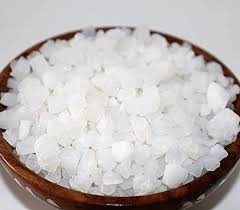
Banslochan in Pooja and Ritual Practices
India’s spiritual heritage is deeply rooted in rituals, natural remedies, and the divine connection between nature and the human soul. Each item used in pooja (ritual worship) holds sacred symbolism and energetic power. One such revered natural substance is Banslochan—also known as Tabasheer or Bamboo Manna. Traditionally obtained from the inner portions of female bamboo stems, Banslochan has a rich history of being used not only for health and rejuvenation but also as a spiritually potent element in Hindu poojas and rituals.
In the practice of Ayurveda and Sanatan Dharma, Banslochan is believed to represent purity, strength, and divine connection. Its presence in various ceremonies speaks to its ability to amplify positive energy, enhance mental focus, and offer a vibrational shield during spiritual work.
At Dirghaanshi, we believe in reviving such sacred elements for a more meaningful spiritual experience. In this detailed article, we explore the traditional and spiritual uses of Banslochan in pooja, how it is incorporated into rituals, and why it remains a valuable substance in Hindu worship practices.
Long Description
What is Banslochan?
Banslochan, also called Tabasheer or Tavakshira, is a crystalline, whitish substance found inside the nodes of specific bamboo species (especially Bambusa arundinacea). It is collected when the plant matures and dries out naturally. In Ayurveda, Banslochan is recognized for its cooling, strengthening, and rejuvenating properties, and is included in various rasayana (rejuvenative) formulations.
However, beyond its medicinal uses, Banslochan is deeply respected in the spiritual and ritualistic domain, especially in pooja, havan, vrat (fasting), and other auspicious occasions.
Historical and Scriptural Significance of Banslochan in Rituals
Banslochan is referred to in Ayurvedic and Puranic texts as a substance that enhances vitality and purity
In the Bhavaprakasha Nighantu, it is listed as a cooling and sacred substance used in spiritual rejuvenation
Ancient sages used Banslochan in combination with herbs, ghee, and honey during spiritual ceremonies
It is often mentioned as a component in holy offerings to deities, especially Shiva, Vishnu, and Devi Durga
Its presence in rituals is not just symbolic but is said to enhance sattva (purity) and neutralize negative energy.
Why Banslochan is Used in Pooja
- Symbol of Purity and Divine Strength
In Sanatan Dharma, bamboo is a plant of strength and resilience, and Banslochan, being its internal essence, is symbolic of purity drawn from strength. Offering Banslochan during rituals is believed to invoke these qualities in the worshipper—spiritual strength, focus, and internal cleansing. - Enhancer of Ritual Vibration
When added to Havan Samagri or ritual fire offerings, Banslochan is believed to purify the environment and enhance the vibrational frequency of the space. This helps in creating a protective and sacred energy field, especially during mantras and yajnas. - Offering to Deities
Banslochan is often used in:
Naivedya offerings (combined with ghee, honey, and dry fruits)
Shivling abhishek preparations for its cooling properties
Devi Pooja, especially during Navratri, as it is considered auspicious for feminine divine energy
Sandal paste and holy ash mixtures, enhancing their spiritual potency
- Used in Prasad and Vrat Bhojan
During fasting rituals (vrat) and spiritual cleansing days, Banslochan is mixed in small amounts with milk, ghee, mishri (rock sugar), and herbs. It is consumed as a cooling and energizing tonic, believed to promote spiritual awareness and support internal detox. - Ingredient in Holy Herbal Mixtures
In ancient gurukuls and ashrams, Banslochan was often mixed with herbs like Shankhpushpi, Brahmi, and Tulsi to prepare mental calming and spiritual-focus powders for use before long meditation or chanting sessions. - Used During Marriage and Samskar Ceremonies
In traditional Hindu weddings and sanskar rituals (like Namkaran, Yajnopavita, etc.), Banslochan is part of the ritual bath powders, sacred thread pastes, or tilak samagri to bless the body and soul of the participants. - Energy Cleansing and Protection Rituals
In energy-clearing rituals like:
Dhoopan (herbal incense)
Vastu purification puja
Grah dosh removal rituals
Banslochan is often burnt or sprinkled with herbs to ward off negative vibrations and to bring calm and clarity into the surroundings.
How to Use Banslochan in Ritual Practices
- Banslochan in Havan Samagri
Mix finely powdered Banslochan with cow ghee, honey, camphor, and dried herbs like guggal or loban
Offer it in small pinches into the havan fire while chanting mantras
Benefit: Clears negative energy, purifies atmosphere, enhances the power of mantras
- As Tilak or Forehead Paste
Mix Banslochan powder with a few drops of rose water or sandal paste
Apply on the Ajna chakra (third eye center) before meditation or pooja
Benefit: Increases spiritual focus and internal awareness
- In Vrat and Prasad Preparations
Add a pinch of Banslochan to fasting foods like kheer, panjiri, or milk-based sweets
Offer it to deities and then consume as Prasad
Benefit: Offers a cooling and sattvic energy during spiritual discipline
- For Pooja Idol Abhishek
Dissolve Banslochan powder in clean, warm water
Use in abhishek of deities along with milk, honey, and ghee
Benefit: Invokes divine grace and purifies the energy of idols and the puja space
- In Pooja Room Energy Clearing
Mix Banslochan with rock salt and sprinkle around the pooja room weekly
It can also be kept in a small copper or earthen bowl as an energy absorbent
Benefit: Absorbs negativity, maintains spiritual sanctity
Ayurvedic and Energetic Properties That Support Ritual Use
Sheeta Virya (cooling energy) – Helps calm the environment and mind during rituals
Rasayana effect – Rejuvenates subtle energy layers and strengthens aura
Sattvic quality – Promotes clarity, focus, peace, and divine connection
Tridosha balancing – Keeps the body in equilibrium during fasting or extended rituals
Scientific Relevance of Banslochan in Ritual Use
Though scientific studies focus mainly on its health aspects, Banslochan’s:
High silica content supports brain clarity
Anti-inflammatory and cooling nature supports meditative states
Energetic vibrancy (as per traditional energy medicine) is known to stabilize spiritual emotions and aura fields
Precautions While Using Banslochan
Always use authentic, food-grade Banslochan
Use in very small quantities; overdose may cause constipation or dryness
Store in a dry, airtight container in your pooja room or herbal cabinet
Avoid use in extreme cold climates unless combined with warming herbs
Who Should Use Banslochan in Rituals?
Priests and temple workers performing regular yajnas or poojas
Spiritual seekers, meditators, and sadhaks
Individuals doing weekly vrats or Navratri rituals
Families performing house warming, Vastu puja, or Grah Shanti
Yogis and Brahmacharis involved in energetic discipline
Conclusion
Banslochan is more than just a mineral extract—it is a sacred element of divine essence. Its presence in Hindu rituals connects the practitioner to the deeper energies of calmness, purity, and inner focus. From havans and vrat prasad to abhishekam and grah dosh remedies, Banslochan has been woven into the fabric of our spiritual and cultural heritage for generations.
At Dirghaanshi, we encourage you to rediscover and honor such powerful elements in your rituals, not just for tradition’s sake, but for the energetic transformation they inspire. Banslochan can be a beautiful part of your daily or occasional spiritual practice, adding both purity and power to your sacred journey.









